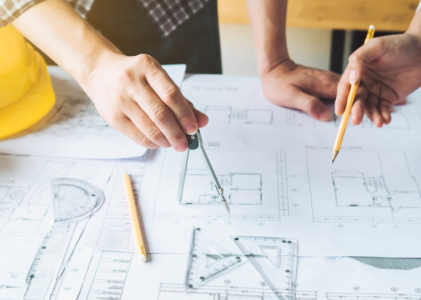As construction company owners, you constantly seek new ways to innovate and add value to your projects. One of the most compelling trends in modern home design is the seamless integration of outdoor living spaces. These additions are more than just a luxurious touch; they reflect a growing desire for homeowners to experience nature and open-air comfort without stepping beyond their property lines.
Embrace the Open Air
Outdoor living spaces come in various forms, from expansive decks and patios to sophisticated outdoor kitchens and elegant garden retreats. What they all share is a focus on blending the indoors with the outdoors to create harmonious living environments. For you, the construction professional, this means an opportunity to impress clients with your adaptability and forward-thinking designs.
Harmonious Continuity
To truly integrate outdoor spaces with indoor living areas, consider continuity of design. This could mean extending roof lines, using complementary materials, or creating a flow of space that encourages movement between inside and outside. For instance, large sliding or folding glass doors can open up a living room to a deck, making the transition almost imperceptible.
Multi-Functional Features
Modern outdoor spaces often serve multiple functions—entertainment, relaxation, dining, and sometimes even cooking. Adding built-in seating, fire pits, and outdoor kitchens not only increases the usability of these spaces but also adds significant value to your construction projects. With multifunctional features, your clients get the most bang for their buck, and you set yourself apart from competitors.
Utilizing Technology
Technological innovations have provided a new dimension to outdoor living. From sophisticated lighting solutions to integrated sound systems and weatherproof entertainment systems, implementing technology can elevate outdoor spaces to be as modern and usable as any indoor area.
The Green Advantage
Sustainability is now a key factor in construction decisions. Incorporating sustainable practices and materials in the creation of outdoor living spaces meets this demand head-on. Eco-friendly choices can range from using reclaimed wood or stone to installing solar-powered lighting or water-saving irrigation systems for gardens.
Landscaping as a Focal Point
Presenting a well-designed landscape can dramatically elevate the attractiveness of outdoor living spaces. It’s not just about planting a few flowers or shrubs; it’s about sculpting the land to create a particular ambiance or feeling. From serene water features to vibrant plant arrangements, landscaping is an art that combines aesthetics with eco-consciousness.
Building for All Seasons
One of the challenges of outdoor spaces is making them comfortable throughout the year. Offering solutions such as retractable awnings, heated floors, or outdoor fireplaces ensures that these spaces are just as inviting on a crisp autumn evening as they are on a warm summer day.
A Win-Win Scenario
Integrating outdoor living spaces into construction projects isn’t just a trend – it’s a smart investment. For construction company owners like you, incorporating such elements can significantly increase project appeal and market value. You cater to a growing market that craves an indoor-outdoor lifestyle while differentiating your services with innovative and sustainable designs.
In conclusion, by embracing outdoor living spaces, you can provide more than just a structure; you offer a lifestyle. This strategic move will not just satisfy your clients but also position your company at the forefront of modern construction design. Begin to rethink how you can enhance your next project by bringing the comfort and functionality of indoor living to the great outdoors. Your clients—and your portfolio—will thank you for it.…






